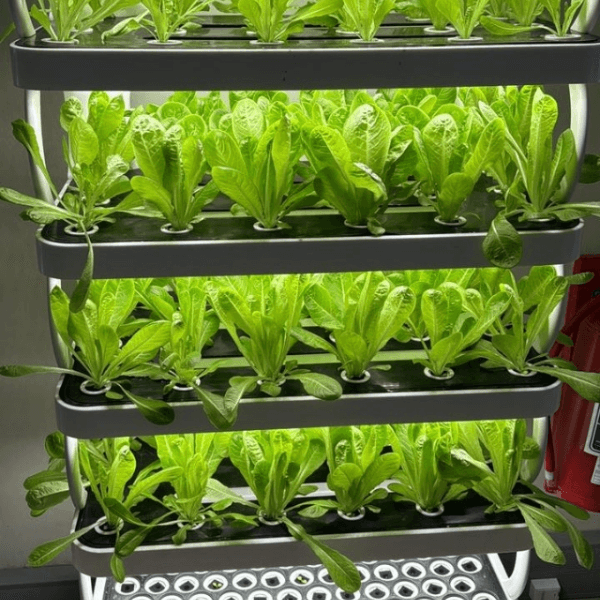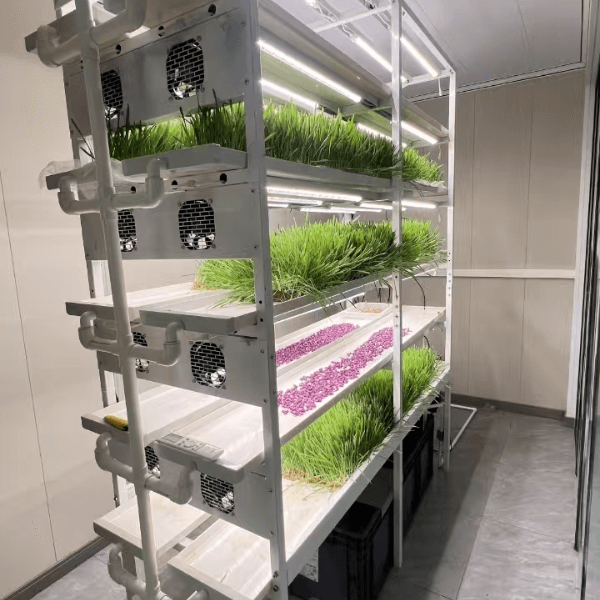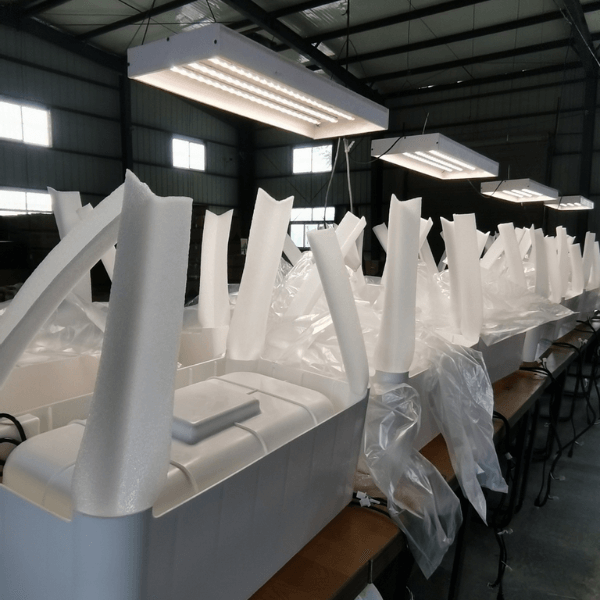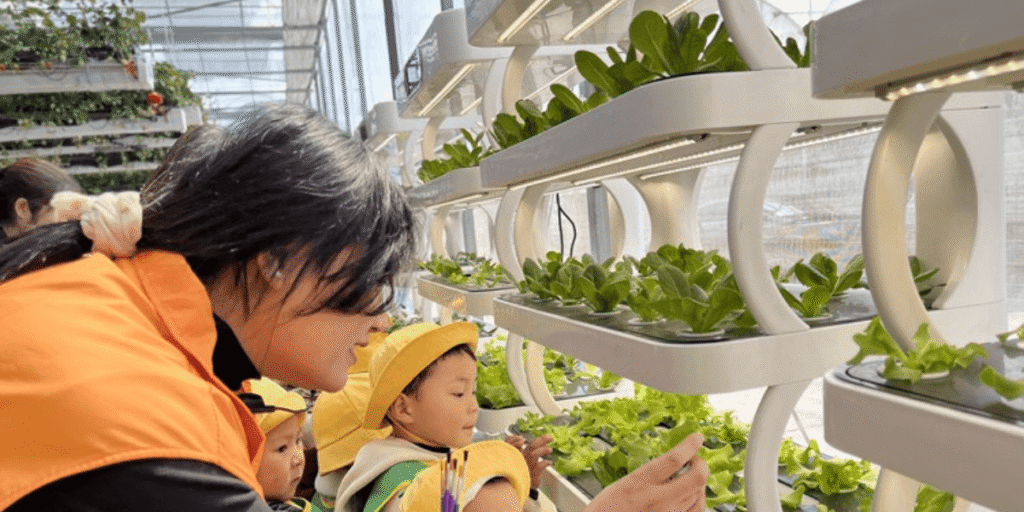Hydroponic Gardening in Small Spaces is changing the way we grow food at home. Living in a compact apartment or a cozy home often means giving up on the idea of a lush garden. But what if you could skip the need for soil and outdoor space entirely?
This blog will walk you through how hydroponics makes it all possible. No messy soil, no constant weeding, and no unpredictable harvests. With the right setup, you can grow fresh, healthy plants quickly and efficiently right inside your small space. Whether you’re a beginner or looking to level up your indoor garden, you’re in the right place.
Why Hydroponic Gardening Works for Small Spaces
ydroponics isn’t just a passing trend,it’s a clever way to garden that fits perfectly with today’s lifestyle. Instead of soil, it uses nutrient-rich water that’s carefully balanced to help plants thrive. This approach offers many advantages, especially when you don’t have much space to work with.
- Space-Saving Efficiency: Hydroponics lets you grow plants closer together and stack them vertically, turning small spaces like a kitchen corner into productive mini farms multiplying your harvest several times over traditional gardening.
- Faster Growth & Bigger Yields: With roots receiving constant, precise nutrients and oxygen, plants grow quicker and produce more than soil-grown ones. You’ll be amazed at the speed of growth!
- Clean & Controlled: No more muddy floors, pests, or weeds. Hydroponics offers a tidy, controlled environment where you manage nutrients perfectly for healthier, tastier plants.
- Water-Wise: Nutrient solutions recirculate, reducing water use drastically compared to soil gardening great for both your plants and the environment.
- Grow All Year: Indoor hydroponics frees you from seasonal limits so you can enjoy fresh fruits and veggies any time of the year.

Choosing the Best Hydroponic System for Limited Space
Choosing the right hydroponic system makes all the difference when space is tight. Think about how much room you have, your budget, and how much time you want to invest. Here are some popular options, along with what makes each one unique and the types of growers they suit best.
1. Deep Water Culture (DWC) for Compact Hydroponic Gardens
- The Simplicity King: DWC, or Deep Water Culture, is a favorite for beginners because it’s simple and affordable. Plants sit in net pots with their roots soaking directly in oxygen-rich nutrient water. A small air pump and air stone keep the water well-oxygenated, which is essential for healthy roots.
- Pros: It’s easy to set up with few moving parts, making it perfect for fast-growing leafy greens and herbs like lettuce, basil, and spinach and even some peppers. Plus, it’s a great DIY project you can build a working DWC system using just a simple 5-gallon bucket.
- Cons: It’s not the best choice for very large, thirsty, or long-term fruiting plants. You’ll need to keep an eye on water levels and refresh the nutrient solution regularly to keep things just right. In warmer climates, managing the temperature of the nutrient solution can also be important.
- Considerations: Although it’s simple, getting the hang of mixing nutrients and balancing pH is really important.
2. Nutrient Film Technique (NFT) in Small Hydroponic Setups
- The Vertical Marvel: In an NFT system, a thin layer of nutrient-rich water constantly flows over the roots of plants suspended in sloped channels or pipes. This setup naturally supports vertical growing, making it perfect for using wall space efficiently. For instance, the 36-hole Vertical Hydroponic Rack is an ideal product to maximize vertical growing space in NFT systems, allowing you to cultivate more plants in a compact area.
- Pros:
- Very efficient in water and nutrient use.
- Works especially well for fast-growing, shallow-rooted plants like lettuce, strawberries, and a variety of herbs.
- The steady flow of water keeps roots well-oxygenated, promoting healthy growth.
- Cons:
- Vulnerable if the pump fails or clogs, since there’s no standing water to keep roots hydrated.
- Requires a carefully set slope to ensure proper drainage and flow.
- Plants with large or dense root systems may block the channels, making them less suitable.
- Considerations:
- Setup can be more involved than a basic DWC system.
- Maintaining consistent nutrient flow is crucial.
3. Drip Hydroponic Systems Perfect for Tight Spaces
- Versatility Redefined: Drip systems work by sending nutrient solution straight to the base of each plant through small emitters, usually on a timer. This lets you feed your plants in a precise and targeted way.
- Pros: Drip systems are super versatile and work well for all kinds of plants, from leafy greens to bigger fruiting crops like tomatoes and cucumbers. Once you get it set up, it’s pretty easy to automate, which makes it a great option for beginners who want a low-maintenance system.
- Cons: The emitters can sometimes get clogged with nutrient buildup or debris, so it’s important to check them regularly. You’ll also need a growing medium like rockwool, coco coir, or perlite to support the plants and help retain moisture.
- Considerations: A recirculating drip system is a smart choice for small spaces because it reuses water, making it more efficient and environmentally friendly.
4. Aeroponics: Advanced Hydroponic Gardening in Small Areas
- The High-Tech, High-Growth Option: In an aeroponic system, plant roots hang freely in the air inside a closed chamber and are regularly misted with a fine spray of nutrient solution.
- Pros: Aeroponics is known for its incredibly fast growth and excellent nutrient absorption, thanks to the high levels of oxygen reaching the roots. It’s also very efficient when it comes to water use.
- Cons: Aeroponic systems can be more complex and costly to set up because they require high-pressure pumps and fine misting nozzles. If the pump or sprayer fails, plants can suffer quickly, sometimes within just a few hours. It also takes precise nutrient delivery to keep everything running smoothly.
- Considerations: Though more advanced, aeroponics can be very rewarding for dedicated small-space growers, especially when growing high-value crops, thanks to its rapid growth rates.
5. Wick Systems: Simple Hydroponics for Small Spaces
- The Ultimate Simplicity: Wick systems work passively by using a simple wick like felt or rope to pull nutrient solution from a reservoir up into the plant’s growing medium. They don’t require any pumps or electricity.
- Pros: These systems require very little maintenance, run completely silently, and are very affordable to set up. They’re perfect for absolute beginners who want to try hydroponics without a big investment or complicated setup.
- Cons: Growth tends to be slower compared to active systems. Wick setups work best for small, non-fruiting plants that don’t need much water or nutrients, like herbs or decorative plants. Nutrient buildup around the wick can happen, so it’s important to flush the system from time to time.
- Considerations: It’s ideal for a simple countertop herb garden when you want something low-maintenance and hassle-free.

Portable Hydroponic Gardens and All-in-One Solutions
If you move around a lot or want the freedom to grow anywhere, portable hydroponic systems are a great option. Some popular types include:
- Small-Scale Tower Gardens: These systems make the most of vertical space while taking up very little floor area and are easy to move whenever you need.
- Countertop Hydroponic Systems: Often combined with grow lights, these units are plug-and-play, perfect for growing herbs and leafy greens with minimal effort.
- 5-Gallon Bucket (Bubble Bucket) Systems: A popular DIY choice that’s simple to build and surprisingly effective.
- Pineapple Tower: The Pineapple Tower is designed for large-scale commercial farms, offering high planting efficiency and yield. It supports smart agricultural management, making it an ideal choice for modern farm production.
- Sky Tower:The Sky Tower, on the other hand, is perfect for urban home gardens. Its compact footprint fits well in small spaces like apartments or balconies, allowing you to easily grow fresh, healthy vegetables and fruits at home.
While portable systems are super convenient, keep in mind that being compact sometimes means smaller yields or limited system size. Also, think about whether it uses batteries or needs to plug in, and how much water the reservoir can hold if you want real mobility.
Essential Tips for Successful Hydroponic system in Small Spaces
No matter if you’re starting with a simple wick system or going for a more advanced aeroponic setup, these essential tips will help your small-space hydroponic garden thrive.
- Embrace Vertical Growing: When space is tight, going vertical is your best bet. Use shelves, hanging planters, wall-mounted setups, or vertical towers to grow more without using up floor space. Adding trellises for climbing plants like peas or tomatoes helps too, and mounting net pots on wall grids can give you even more room to grow.
- Strategic Plant Selection: Choose compact, bushy plants that don’t spread out too much. Focus on fast-growing, high-yield varieties like leafy greens (lettuce, kale), herbs (basil, mint, cilantro), and small fruits like cherry tomatoes or dwarf peppers. If you’re new to hydroponics, picking the right plants is key. Check out our guide on 12 Easy Hydroponic Plants for Beginners to get started.
- Use Efficient Lighting: Natural light alone isn’t enough indoors. Use full-spectrum LED grow lights, adjusting brightness and duration by plant stage. Blue light boosts leafy growth; red light supports flowering. Keep lights close but avoid burning plants.
- Control Nutrients & pH: Maintain pH between 5.5 and 6.5 and regularly check EC or PPM for the right nutrient balance. Reliable meters help, and beginners benefit from pre-mixed nutrient solutions.
- Manage and Train Plants: Rotate plants weekly, prune regularly, and use supports to guide growth. Techniques like topping or FIMming encourage bushier, more productive plants in small spaces.
- Keep It Clean: Rinse reservoirs and tubing often to prevent algae and clogs. Change nutrient solution every 1–2 weeks to avoid root rot and nutrient issues.

Common Questions About Hydroponics for Small-Space Growers
Whether you’re starting your hydroponic journey in Tokyo or Toronto, some questions universally pop up:
Q1: How much does it cost to start hydroponics?
A: DIY setups like a simple DWC bucket can cost $30–$50. Countertop systems range from $80–$300. Advanced vertical towers or grow boxes can go beyond $1000. Don’t forget ongoing costs for nutrients, electricity, and replacement parts.
Q2: Which plants grow well in different climates?
A: Leafy greens (lettuce, kale) and herbs (basil, mint) adapt well to most indoor conditions. In humid areas, use fans for airflow. In dry areas, add a humidifier and grow plants with waxy leaves.
Q3: How do I dispose of used nutrient solution?
A: Dilute it (e.g., 1:10 with water) and use it to water soil plants. Never pour concentrated solution down the drain it’s better to reuse it safely.
Q4: What if my tap water is hard?
A: Hard water can disrupt nutrient balance and cause buildup. Use filtered or RO water, or adjust your nutrient mix if you understand water chemistry well.
Q5: How do I buy the right electrical gear when ordering internationally?
A: Always check voltage (110V vs. 220V) and plug type for your region. You may need a voltage converter or plug adapter. Look for “universal voltage” products or buy from local suppliers to avoid compatibility issues.
Summary: Creating Your Green Oasis in Small Spaces
Hydroponic gardening is more than just a way to grow plants it’s a smart, sustainable approach that brings fresh produce within reach for everyone, no matter how small their living space. By picking the right system, choosing the best plants, and keeping up with simple maintenance, you can easily turn a small corner of your home into a thriving indoor garden. Along the way, you’ll enjoy fresh, flavorful harvests and build a closer connection to the food you eat, all from the comfort of home.
Ready to Start Hydroponic Gardening in Your Small Space?
Want to grow a lush garden even in a small space? Hydroponics makes it simple to turn your balcony corner or kitchen countertop into your own little farm! Don’t let the size of your living space dictate the freshness of your food. Dive into the world of hydroponic gardening today! Start small, experiment with different plants, and discover the immense satisfaction of growing your own produce. The future of fresh, sustainable food is here, and it’s waiting to flourish in your small space.
We’d love to hear your hydroponic stories and see your photos share your progress with us anytime! Head over to Greenfuturehydro.com for more handy tips and recommendations to make your hydroponic journey smoother. Don’t forget to follow us on Instagram Greenfuturehydro for daily inspiration and clever hacks.
Got questions about which system fits your space best or how to boost your harvest? Drop a comment below or send us a DM we’re always happy to chat with fellow plant lovers! Looking for hydroponic gear or nutrients? Check out our products page to find everything you need to grow with ease.
